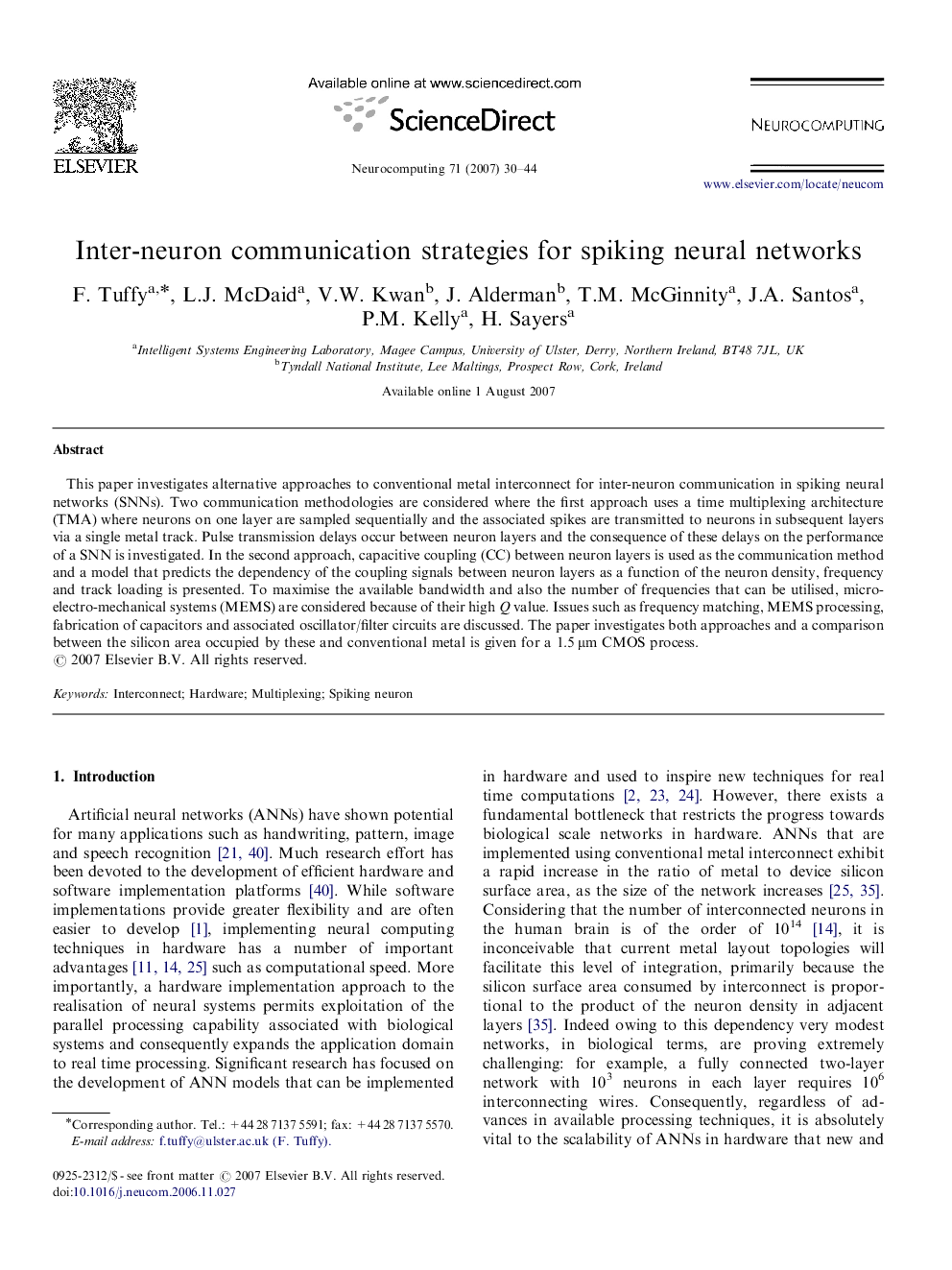| Article ID | Journal | Published Year | Pages | File Type |
|---|---|---|---|---|
| 410805 | Neurocomputing | 2007 | 15 Pages |
This paper investigates alternative approaches to conventional metal interconnect for inter-neuron communication in spiking neural networks (SNNs). Two communication methodologies are considered where the first approach uses a time multiplexing architecture (TMA) where neurons on one layer are sampled sequentially and the associated spikes are transmitted to neurons in subsequent layers via a single metal track. Pulse transmission delays occur between neuron layers and the consequence of these delays on the performance of a SNN is investigated. In the second approach, capacitive coupling (CC) between neuron layers is used as the communication method and a model that predicts the dependency of the coupling signals between neuron layers as a function of the neuron density, frequency and track loading is presented. To maximise the available bandwidth and also the number of frequencies that can be utilised, micro-electro-mechanical systems (MEMS) are considered because of their high Q value. Issues such as frequency matching, MEMS processing, fabrication of capacitors and associated oscillator/filter circuits are discussed. The paper investigates both approaches and a comparison between the silicon area occupied by these and conventional metal is given for a 1.5 μm CMOS process.
